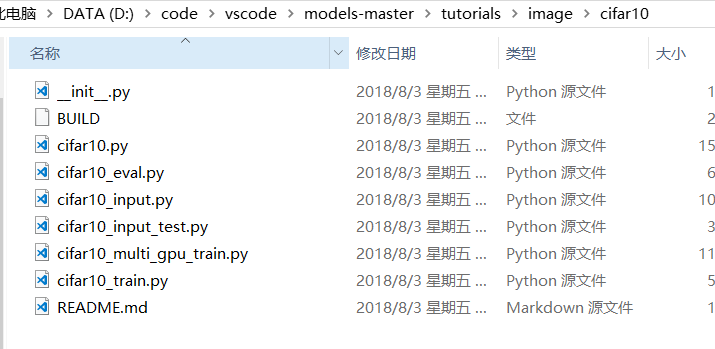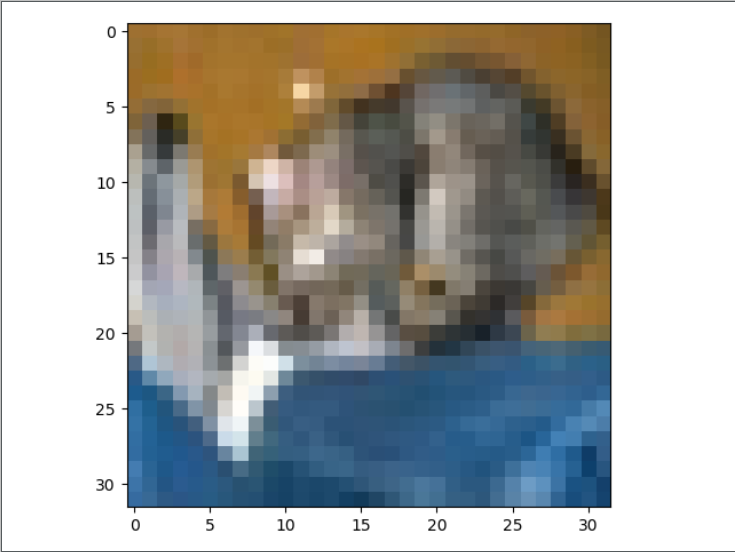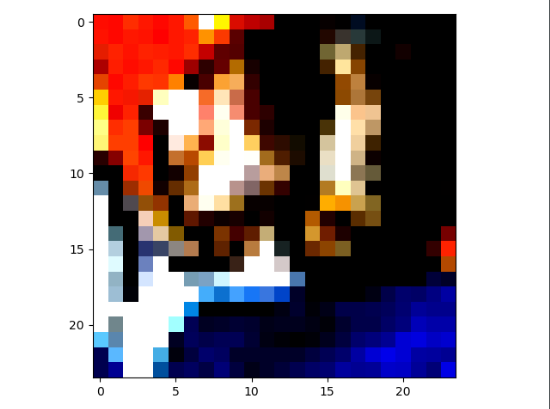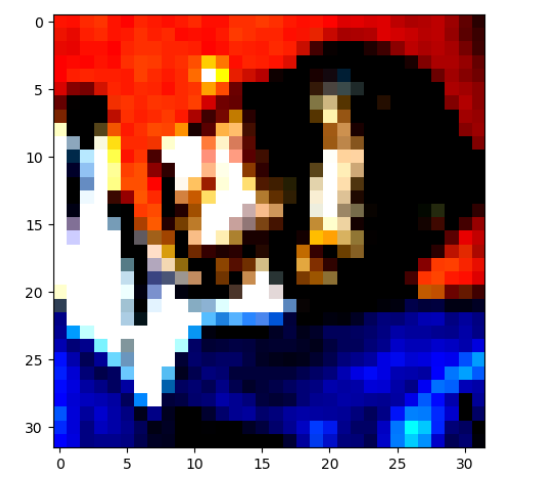git
https://github.com/tensorflow/models
Download the cifar10 file and put it in the project path

Project structure

download
from cifar10 import maybe_download_and_extract maybe_download_and_extract()
Default download path

Read display manually
import numpy as np import pylab filename = '/tmp/cifar10_data/cifar-10-batches-bin/test_batch.bin' bytestream = open(filename, "rb") # test has 10000 pieces of data buf = bytestream.read(10000 * (1 + 32 * 32 * 3)) bytestream.close() data = np.frombuffer(buf, dtype=np.uint8) data = data.reshape(10000, 1 + 32*32*3) labels_images = np.hsplit(data, [1]) labels = labels_images[0].reshape(10000) images = labels_images[1].reshape(10000, 32, 32, 3) img = np.reshape(images[0], (3, 32, 32)) #Export first view img = img.transpose(1, 2, 0) print(labels[0]) pylab.imshow(img) pylab.show()

Use native functions
The self-contained reading function preprocesses the image, cuts 32X32 into 24X24, and then standardizes the image (subtracting the average pixel and dividing by the pixel variance). The advantage of this is that all the input is within an effective data distribution, which is convenient for feature classification processing, and makes the convergence of gradient descent algorithm faster
# Put it in cifar directory import cifar10_input import tensorflow as tf import pylab # Fetch data batch_size = 12 data_dir = '/tmp/cifar10_data/cifar-10-batches-bin' images_test, labels_test = cifar10_input.inputs(eval_data=True, data_dir=data_dir, batch_size=batch_size) # (12, 24, 24, 3) (12,) print(images_test.shape, labels_test.shape) sess = tf.Session() tf.global_variables_initializer().run(session=sess) tf.train.start_queue_runners(sess=sess) image_batch, label_batch = sess.run([images_test, labels_test]) print("__\n", image_batch[0]) print("__\n", label_batch[0]) pylab.imshow(image_batch[0]) pylab.show()

It can be seen that the image becomes disordered after processing
If you want to see normal data, you can read it manually or modify the function of the read function
Modify image size and do not process



Read and display with opencv, note that the data format needs to be converted to u8 type
# Put it in cifar directory import cifar10_input import tensorflow as tf import pylab import cv2 as cv import numpy as np # Fetch data batch_size = 12 data_dir = '/tmp/cifar10_data/cifar-10-batches-bin' images_test, labels_test = cifar10_input.inputs(eval_data=True, data_dir=data_dir, batch_size=batch_size) # (12, 24, 24, 3) (12,) print(images_test.shape, labels_test.shape) sess = tf.Session() tf.global_variables_initializer().run(session=sess) tf.train.start_queue_runners(sess=sess) image_batch, label_batch = sess.run([images_test, labels_test]) print("__\n", image_batch[0]) print("__\n", label_batch[0]) img = np.asarray(image_batch[0], np.uint8) print(img.shape) print(img) cv.imshow('img', img) pylab.imshow(img) pylab.show() cv.waitKey(0)